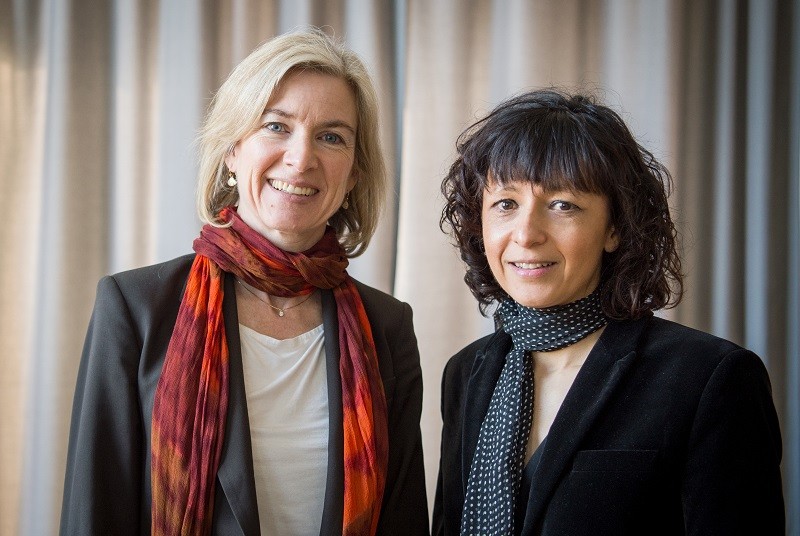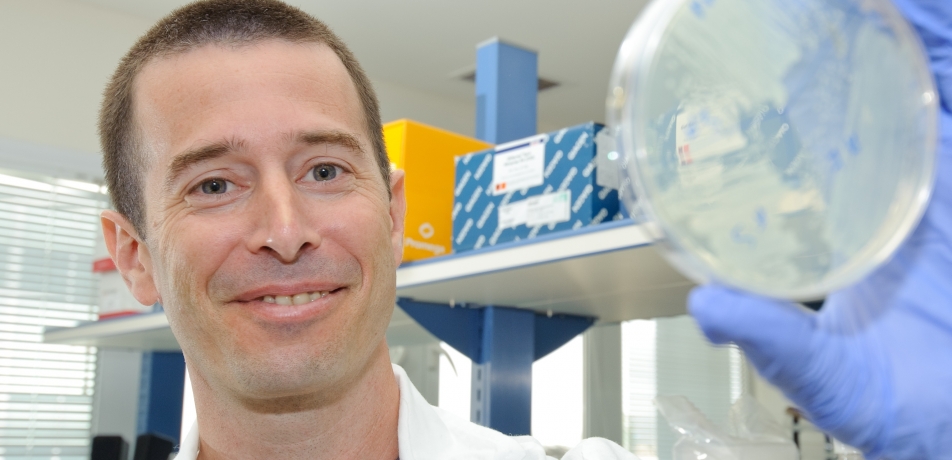“The discovery of CRISPR is probably one of the next Nobel prizes,” Prof. Rotem Sorek predicted in 2017. He was right

In February 2017, in Boston for the American Association for the Advancement of Science’s (AAAS’s) annual conference, The Curiosity Review snagged a chair in a packed ballroom of attendees.
The main attraction was Dr. Emmanuelle Charpentier. Then a rock star to scientists, today she is headline news; along with her longtime collaborator, Dr. Jennifer Doudna, Charpentier just received the 2020 Nobel Prize in Chemistry for the development of CRISPR. The method, which stands for “clustered regularly interspaced short palindromic repeats,” enables scientists to edit DNA.
(Did you know that Charpentier and Doudna are the first women to win the Nobel in Chemistry since the Weizmann Institute’s own Prof. Ada Yonath in 2009?)
But back in 2017, already raring to hear more about CRISPR, imagine The Curiosity Review’s excitement when a familiar figure joined Charpentier on stage to discuss his own research: Weizmann’s Prof. Rotem Sorek!
We knew that Sorek – one of CRISPR’s earliest adopters, as profiled as a “scientist to watch” in The Scientist – was doing cutting-edge work and that scientists worldwide were following his progress, but seeing him with one of the tool’s inventors was moving. It was Charpentier’s symposium, and she respected Sorek enough, believed his research significant enough, to have him to join her. In fact, she, Doudna, and Sorek often cite each other’s work.
Only a month or so later, Sorek presciently proclaimed: “The discovery of CRISPR is probably one of the next Nobel prizes.”
Charpentier – currently at the Max Planck Unit for the Science of Pathogens, which she founded – and Doudna (aka “The Dude”) of UC Berkeley are credited with transforming “an obscure bacterial immune mechanism … into a tool that can simply and cheaply edit the genomes of everything from wheat to mosquitoes to humans,” writes Science.
Some believe that the gene-editing method could forever eradicate genetic diseases, such as cystic fibrosis. CRISPR can also target many genes at once, which is huge when studying complex diseases like Alzheimer’s and cancer. It is also a boon for plant sciences, making it possible to quickly customize crops. In fact, while chatting in Boston, Sorek told The Curiosity Review that CRISPR was already being used on mushroom DNA in order to stop them from turning brown, thus prolonging shelf life.
CRISPR is, as explained, a bacterial immune system, which is Sorek’s focus. Just one of his many breakthroughs: While conducting an experiment on said bacterial immune system, he made what Nature called “an accidental discovery that would fundamentally change scientists’ understanding of how viruses behave.” (Such serendipity is the beauty of basic research.)

In brief, Sorek found that viruses have sophisticated ways of communicating; as the Nature article said, “the social predilections of viruses even help to explain how they evade the bacterial immune system” (meaning CRISPR). Sorek’s discovery stunned the field, turning virology on its head. His work could also help with the problem of antibiotic resistance.
(And did you know that Charpentier and Doudna received Israel’s Wolf Prize earlier this year? This maintains the Wolf’s reputation as a Nobel indicator, with around three dozen Wolf-to-Nobel recipients. Weizmann scientists have won seven Wolfs.)
Already baked into research worldwide, CRISPR is here to stay – but by recognizing Charpentier and Doudna, the Nobel committee is helping keep it in the public eye. We should all be familiar with this revolutionary, powerful tool and its potential for transforming our lives and environment.
After all, as Sorek says, “its potential applications are as vast as the human imagination.”


